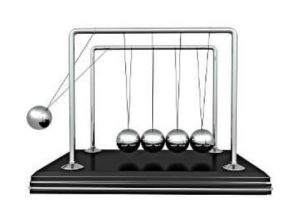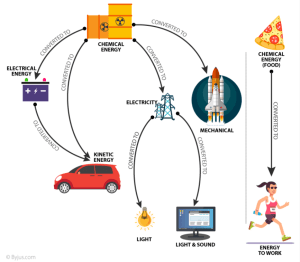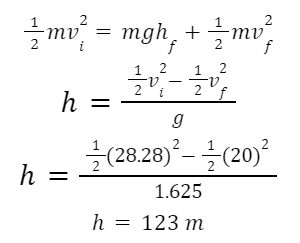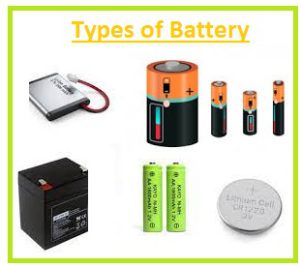Last Updated on May 15, 2025 by Muhamed Elmesery
On a cold night, how do you interpret the feeling of warmth you feel after rubbing your hands together?
How do you explain your coach’s strict instructions to eat a meal that gives you energy before exercising?
For a light bulb to glow and emit its light, how do you describe its principle of work?
Many questions around everyday’s spontaneous actions and phenomena we witness can be clarified and explained using the physics laws and principles that govern them. Usually, the answers are quite basic and simple. The answer to our starter questions is very basic, yet dynamic: it is the law of conservation of energy.
In this article, the law of conservation of energy will be fully introduced. From its definition, formula, to everyday examples, its principle of work and how to differentiate between the various types of conservation of energy laws in physics… are you ready?
Check Praxilabs Virtual Physics Labs Now
Table of Contents
What are the 3 laws of conservation of energy?
If it is not your first time to hear the term “law of conservation” or “conservation of energy”, then it might still be your first time to know that there are three different types of conservation laws. So, what are the 3 laws of conservation of energy?
Not just three but many of the quantities in physics are considered to be conserved. In mechanics, 3 quantities are conserved, and they remain as such even when relativistic mechanics or quantum mechanics are applied. The quantities are:
- Energy.
- Angular momentum.
- Linear momentum.
A conservation law is a principle that states that:
“If in an isolated physical system, a certain physical quantity does not change with time.”
Without the urge of considering the microscopic details of chemical reactions or physical processes, conservation laws are vital in studying physics and its phenomena as it helps predict the various macroscopic behavior of the systems in study.
Law of Conservation of Linear Momentum
While the law of conservation of energy is our main interest in this article, we shall briefly define the other two laws. In physics, linear momentum is a frequently used vector quantity. Add to that it is a conserved one as well.
The law of conservation of linear momentum connects both the force and the momentum. It states that:
“For an object or more, in an isolated system, the momentum remains constant if the net external force acting on the system is equal to zero.”

Mathematically speaking, the previous statement is given as follows:

This law is pivotal in describing objects’ collisions in isolated systems, where the total momentum before the collision is equal to that after it. Momentum’s S.I. unit is kilogram per second (kgm/s), or Newton times second (N.s).
Create An Account To Try Praxilabs Physics Experiments
Law of Conservation of Angular Momentum
The law of conservation of angular momentum states that:
“For a subject when no external torque acts on it, no change of angular momentum will occur.”
This law is proved mathematically to be right. It is given by the equation:

where
- l: the angular momentum vector.
- r: the radius of the object.
- p: the object’s linear momentum vector.
- m: the mass of the object.
- v: the object’s velocity vector.
Thanks to this conservation law, our earth is still rotating about its axis until now since the time it was formed! You can read out more in this article: 20 Examples of Law of Inertia in Everyday Life.
Principle of Conservation of Energy
Side by side with Newton’s laws, the laws of conservation of mechanical energy and momentum are a key to grasping and understanding almost all our earthly physics. Energy in this context refers to the total energy of the isolated system. This energy can be gravitational, heat, kinetic, potential…etc.

Note that energy can not be created nor destroyed. Instead, it can be transformed from one form to another. The law of conservation of energy—as well as every other conservation law—deals with isolated systems. Thus, the total energy of the system remains constant.
The law of conservation of energy definition is given as:
“In a closed isolated system, the system’s total energy is conserved.”
Conservation of Energy Formula
Since this law deals with the total energy of the system, this amount is determined by:
UT = Ui + W + Q
where
- UT: the system’s total internal energy.
- Ui: the system’s initial internal energy.
- W: the work done by or on the system.
- Q: the heat added to the system, or removed from it.
The conservation of energy equation can also be written in the form of:
U = W + Q
This also represents the statement of the first law of thermodynamics.
Einstein’s 20th century life-changing equation of mass-energy equivalence is another evidence that energy cannot be created nor destroyed. The famous equation states that:
E=mc2
where
E: the amount of energy in the object/system,
m: the mass of the object/system, and
c: the speed of light, that is equal to 3*108 m/s.
Check your understanding!
For a better comprehension, reflect on the following example in order to know how conservation of energy can describe objects’ movement.
With gravitational acceleration equals 1.625 m/s2, consider a golfer, or an astronaut striking a golf ball on the moon. The ball leaves the club at 45to the lunar surface, and traveling at 20 m/s horizontally and vertically.
How high would the golf ball go? Knowing that the total velocity is 28.28 m/s.
Solution!
We first start by writing down the mechanical energy expression, that is given by:

From the law of conservation of energy, both the masses cancel out thus we can determine and obtain the height (h), as follows:

Conclusion! Our steps towards solving this problem would have been much more difficult if we only used kinetic equations. But thanks to the law of conservation of energy, the solution was as direct as we made it.
For FREE! Try All Virtual Experiments You Need!
Conservation of Energy Examples
Almost everything around us includes forms of energy conservation, while many inventions and applications of physics and engineering rely on this fact.

law of conservation of energy example
In Physics, most of the inventions rely on the fact that energy is conserved when it is transferred from one form to another. A number of electrical and mechanical devices operate solely on the law of conservation of energy. We will discuss a few examples here.
In a torch, the chemical energy of the batteries is converted into electrical energy, which is converted into light and heat energy.
In hydroelectric power plants, waterfalls on the turbines from a height. This, in turn, rotates the turbines and generates electricity. Hence, the potential energy of water is converted into the kinetic energy of the turbine, which is further converted into electrical energy.
- In a loudspeaker, electrical energy is converted into sound energy.
- In a microphone, sound energy is converted into electrical energy.
- In a generator, mechanical energy is converted into electrical energy.
- When fuels are burnt, chemical energy is converted into heat and light energy.
Chemical energy from food is converted to thermal energy when it is broken down in the body and is used to keep it warm.
Example of Conservation of Energy
If a stick of dynamite explodes, for example, the chemical energy contained within the dynamite changes into kinetic energy, heat, and light. If all this energy is added together, it will equal the starting chemical energy value.
The physics experiments and applications based on the law of conservation of energy are many, with versatile range of lab experiments that can be conducted. Without the need to visit a real physics lab, online virtual labs can solve the hassle. Virtual simulators, i.e. PraxiLabs, can help you conduct your experiments, and see the magic work.
 PraxiLabs A virtual world of science
PraxiLabs A virtual world of science





